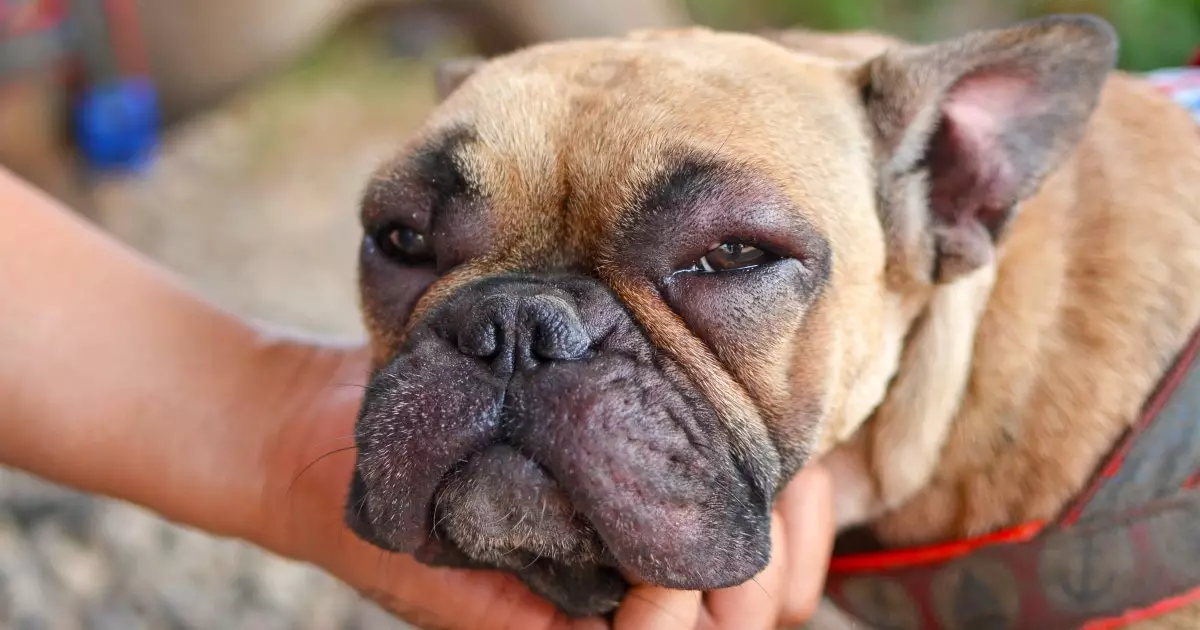Just like humans, dogs can experience discomfort due to itchy eyes, a symptom that can signal various underlying problems requiring attention. If your dog has been rubbing their eyes or squinting, or if you’ve observed redness and discharge, it’s crucial to investigate the potential causes. The sources of eye irritation in dogs can include environmental allergens, infections, structural issues, and persisting dryness—each necessitating a different approach to treatment. Moreover, while some cases may heal naturally after the irritant is removed, persistent symptoms warrant veterinary intervention.
Allergies: A Common Trigger
Allergic reactions are among the primary culprits for causing eye irritation in our canine companions. Dogs can be sensitive to a plethora of allergens, such as pollen, dust mites, mold, and even certain food ingredients or shampoos. These reactions typically manifest with symptoms including redness, excessive tearing, and itching around the eyes. Notably, the onset of seasonal changes, particularly in spring and autumn, can exacerbate allergies, especially for outdoors-loving dogs. When managing allergy-related eye issues, cleaning your dog’s environment can make a significant difference. Additionally, veterinarians may recommend antihistamines to alleviate symptoms.
Dry Eye: The Silent Aggravator
Another common issue affecting dogs’ eyes is dry eye, a condition where the tear glands do not produce enough moisture, leading to uncomfortable sensations. This chronic dryness can result from several factors, including immune-mediated damage to the tear glands, certain medications, or previous eye trauma. Dogs suffering from dry eye often exhibit pawing at their eyes and signs of irritation. If left untreated, this could escalate to severe issues such as corneal ulcers or even vision loss. To treat dry eye effectively, it’s essential to use prescribed eye drops focused on stimulating tear production and alleviating inflammation.
Foreign Bodies: A Sudden Discomfort
One cannot overlook the role of foreign objects in causing sudden irritation to a dog’s eyes. Dust, grass seeds, or other minute particles can inadvertently lodge themselves in a dog’s eye during outdoor activities, resulting in immediate discomfort and often excessive blinking or pawing. If you suspect that your dog has a foreign object in its eye, you can first try a gentle saline rinse to flush it out. However, if the issue persists or there are visible signs of distress, seeking veterinary care is critical to prevent corneal scratches and further complications.
Infections: Seeking Prompt Treatment
Bacterial, viral, and fungal infections can lead to significant eye issues in dogs, with conjunctivitis (also known as pink eye) being particularly prevalent. This condition is characterized by symptoms such as red, swollen eyes accompanied by thick discharge, often of a yellow-green hue. Timely intervention is crucial. A veterinarian can determine the appropriate treatment—be it antibiotics or antiviral medications—to prevent the infection from spreading or worsening. The importance of not overlooking these symptoms cannot be stressed enough, as untreated infections can lead to chronic problems.
Structural Issues: More Than Just Aesthetic
Certain breeds may also face unique challenges due to structural eye issues, such as entropion, where the eyelids turn inward, or ectropion, where the eyelids roll outward. These conditions can exacerbate eye irritation as the lashes may constantly rub against the cornea, leading to inflammation and discomfort. While some mild cases may benefit from lubricant drops, more severe instances often require surgical intervention for long-term relief. As pet owners, recognizing these conditions early is vital in safeguarding your dog’s eye health.
Home Care Tips for Mild Symptoms
If your dog’s eye discomfort appears to be mild, there are several home remedies you can utilize to provide immediate relief. The application of a sterile saline rinse can help remove irritating particles from the eye, while a clean, cold compress can reduce swelling. Ensuring the eye area remains clean is also essential; gently wiping away any discharge can provide comfort. It may also be wise to employ an Elizabethan collar temporarily to prevent your dog from aggravating the symptoms further. It’s essential to remember to practice good hygiene when dealing with your pet’s medical needs, always washing your hands thoroughly before and after treatment.
Recognizing When to Consult a Veterinarian
However, not all cases can be treated at home, and it’s crucial to be vigilant for signs that indicate a need for professional help. If symptoms persist beyond 24 to 48 hours, if there is visible discharge, or if your dog seems to be in pain or has cloudy eyes, do not hesitate to consult your veterinarian. They may conduct a range of diagnostic tests to ascertain the problem’s root cause, as timely intervention can prevent serious consequences, including corneal damage or even loss of vision.
Eye health is an integral aspect of your dog’s overall well-being, one that should never be overlooked. Regularly monitoring your dog’s eyes not only helps catch potential problems early but also enhances their quality of life—happy eyes lead to a happy dog!

